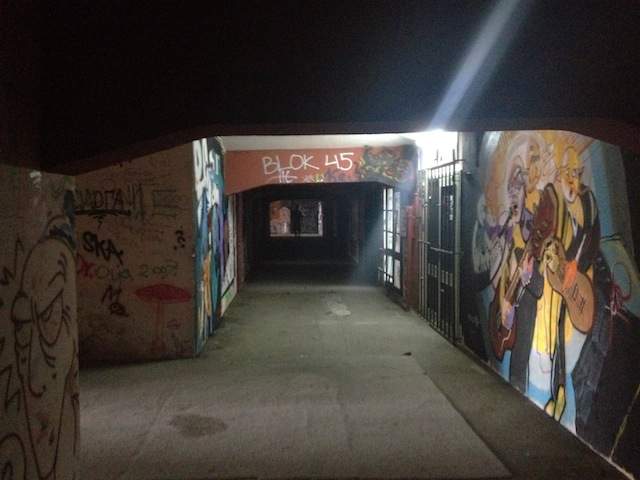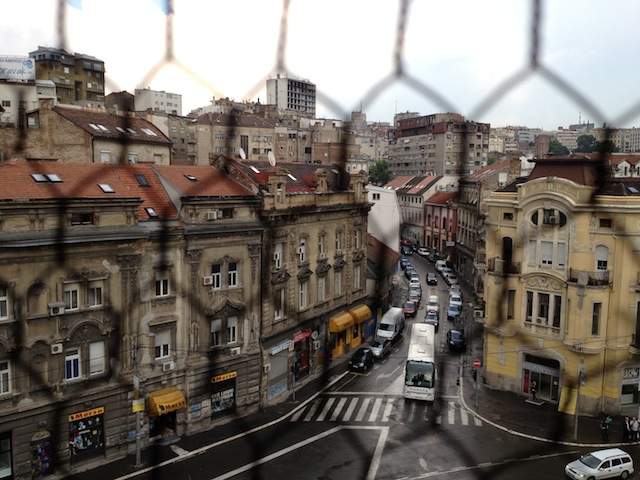Festivals
Jazz? Design? Beer? Busking? Take your pick, Belgrade has a festival for you. Topping the list is the ten-year old Belgrade Beer Fest, Southeastern Europe’s biggest beer festival. For five days every August over 500,000 people celebrate the best of Balkan beer while enjoying free performances by Serbia’s top rock n’ roll bands. Other popular festivals include the world-renowned Belgrade International Theatre Festival, which runs for fifteen days in early September. The Belgrade Jazz Festival in late October. Belgrade’s International Film Festival, which takes place at the end of February. MIXER, an eclectic art and design festival in May, and Baskerfest, the Festival of Street Entertainers in early August.
The Sava River

Belgrade is famously located at the confluence of the Sava and Danube rivers, with the Sava dividing Old Belgrade from the suburbs of New Belgrade. Small fishing vessels and tourist boats slowly cruise along the pea green water and often dock alongside the river overnight. A paved pathway with lanes designated for walkers and bikers extends along both sides of the Sava as far as the city limits. The easiest way to connect to the Sava’s pathway system is from the stairs and the bicycle-elevator, available at Brankov Bridge in the centre of Belgrade (bike rentals and tours are available through ibikebelgrade.com). A ten minute walk east on the Sava’s south side will take you past a row of upscale cafes and bars; continue on for ten minutes and you will reach the Danube and Sava’s confluence point. Here a handful of gently aging restaurant barges, anchored to the shore by creaky wooden walkways, offer up a more entertaining spot to dine or simply enjoy a drink. Restaurants in Belgrade offer cheap, filling, and tasty meals. Expect generous portions of grilled meat or fish, crisp salads, and as much fresh bread as you can eat, all for under ten euros a person.
Savamala
Located just below the Brankov Bridge, Savamala is Belgrade’s oldest and most rapidly evolving neighbourhoods. Streets lined with old apartment and office buildings constructed in the mid 19th century radiate from a warren of riverfront warehouses and small-scale factories. A never-ending stream of trucks, trams, and cars cuts along Karadjordjeva Street, Savamala’s main artery, filling the air with fumes and noise. Fortunately the city has plans to reroute the worst of the traffic. In the meantime, other more visible changes already point to a new future for Savamala. Open warehouse doors reveal artists’ studio space and a pop-up art gallery, and the launch of permanent cultural venues like KC Grad, a cafe, and store, which also hosts art exhibitions, concerts, debates, and film screening, is further cementing Savamala’s reputation as Belgrade’s new creative hub.
Splavs
Belgrade’s nightlife is known as the best in the Balkans and draws weekend partygoers from neighboring Croatia, Montenegro, and Slovenia. After the sun sets, Belgrade’s famous splavs – nightclubs housed in barges anchored along the Sava River- quickly fill up. From Balkan beat to live punk, the music and dress code varies from splav to splav. What you can expect are cheap drinks (a bottle of beer or shot of rakia, a popular fruit brandy, will cost around 2 to 3 euro each) and a party that lasts long into the night. BelegradeEye.com offers a listing of popular splavs here.
BIGZ

Europe’s coolest arts space is in Belgrade, not Berlin. Located in the city’s riverfront Senjak neighbourhood, BIGZ is a behemoth of a building constructed between 1934 and 1941 to house the National Printing Institution of Yugoslavia, followed after World War I by the Publishing and Graphics Institution of Belgrade (BIGZ). Every day over 3000 employees streamed into the building until a lack of funding and new ownership in the 1980s left the building unused and in total disrepair. After the Balkan War, new tenants found a home in BIGZ. Musicians saw prime rehearsal and performance space while artists, designers, and architects could set-up large studios. Today BIGZ still has the look and feel of ancient abandonment – cavernous hallways have become vast canvases for local graffiti artists, spotlit by an open doorway’s narrow beam of light. The ninth (and top) floor is home to Jazz Bar, a bright and airy antidote to the dystopia below. During the day Jazz Bar is the perfect place to linger over an espresso and wifi; at night you can catch a show by one of Belgrade’s best underground bands.
The House of Flowers (Tito’s Mausoleum)
Any visitor to Belgrade must make a pilgrimage to the burial site of Joseph Broz Tito, who led the Socialist Federal Republic of Yugoslavia from 1953 until his death on May 4, 1980. The mausoleum, known as the House of Flowers, houses Tito’s tomb and a fascinating collection of stafetae, the relay batons passed during the celebratory rallies held each year in Tito’s honor. The House of Flowers is located on the grounds of the Museum of Yugoslav History (commonly referred to by its old name, the Museum of the 25th May), which has a permanent collection of cultural and historical artifacts and excellent temporary exhibitions in English and Serbian. The Museum is northeast of central Belgrade but accessible by tram or taxi.
The Cathedral of St. Sava

Although the Cathedral of St Sava is visible from various parts of the city, seeing the stunning church up close is a must. Located on a hilltop plateau in the centre of Belgrade, St. Sava is the largest Orthodox house of worship in the Balkans and one of the 10 largest church buildings in the world. Constructed out of glowing white marble, the dome rises a staggering 70 meters in height, and 10,000 worshippers can fit at any one time. A vast tree-lined courtyard with benches and a fountain surrounds the cathedral and is a popular spot to relax during warmer months. You can easily reach St. Sava by foot from central Belgrade by walking north through the cafe strewn side streets of Vracar, an old residential neighborhood that surrounds the cathedral.
Dorćol
Belgrade’s answer to New York’s Greenwich Village or London’s Soho, Dorćol is a trendy, treelined shopping district by day and a buzzing bar district by night favored by Belgrade’s young and monied set. The most famous – or infamous – streets in Dorćol is Strahinjića Bana, dubbed Silicon Valley because of the surgically enhanced silhouettes that appear once the sun sets and the ice cubes start to tinkle. Needless to say, Dorćol is great for people watching, and drinks are still reasonably priced when compared to other European cities (a domestic beer or shot of rakia, a potent brandy, costs 350 dinar or 3 euros). The morning after head to Visnjiceva Street and refresh yourself with a smoothie from the Elixir Juice Bar or an espresso at Supermarket, a popular cafe and lifestyle store. Dorćol is located just below Belgrade’s old Stari Grad district, a busy row of car-free cobblestone streets lined with brand name shops and crowded cafes. Also close by is leafy Kalemagdan Park, home to the sprawling Belgrade Fortress and the pint-size but popular Belgrade Zoo.


